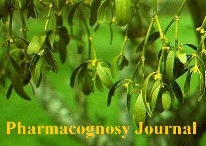Volume5, Issue1
Evaluation in vitro culture of Kelussia odoratissima Mozaff and secondary metabolites production through suspension cultures
Author: Leila Razeghi, Majid Azizi, Seyed Mahdi Ziaratnia, Abdol Reza Bagheri, Seyed Hossein Nemati
Abstract: Kelussia odoratissima Mozaff. an endangered endemic medicinal plant in Iran, is widely used for the treatment of several diseases. The wide range of curative properties like anti-inflammatory effects, cardiovascular and cerebrovascular properties are due to the presence of bioactive compounds which found in high amount in different parts of the plant. In this study, the effect of hormone combination (2, 4-D (0.5, 1 and 2 mgL-1) + (Kin (0, 0.5 and 1 mgL-1) and (NAA (0.5, 1 and 2 mgL-1) + BA (0, 0.5 and 1 mgL-1)) on callus induction (percentage, weight and size) on the MS basal medium was investigated. Combinations of 2, 4-D+Kin and NAA+BA were chosen as the most appropriate hormone combinations. Then suspended cells were grown on the MS liquid media supplemented with chosen hormone combinations with 3 levels of antioxidant (PVP, PVPP and PVP+PVPP) and wet and dry cell weights were measured. Finally, derived freeze dried cells were analyzed by GC/MS to determine and identify bioactive compounds that are produced. Results revealed that cells cultured on the medium containing combination of NAA+BA yielded more dried weight of cells (0.1048 g/20 mL) compared to the cell grown on the medium containing 2,4-D+ Kin combination (0.0787 g/20 mL). The effect of antioxidants on dry weight was significant so that PVP had produced the highest dry weight (0.1016 g/20 mL) than two other treatments while in terms of fresh weight, the combination of PVP+PVPP produced the highest biomass. Different compounds were identified in both cell’s types that some like Ergost-5-en-3-ol, (3.beta.)-, Stigmasterol, beta.-Sitosterol, Hexane, 2, 2, 3-trimethyl-, trans-anethole, Cyclohexasiloxane, dodecamethyl-, Heptasiloxane and 1, 2-Benzenedicarboxylic acid, diisooctyl ester have pharmaceutical properties. We concluded that cell suspension culture of this plant possess potential for biosynthesis of valuable compounds.
Download Full Article: Click Here
Support Us
If you are interested in supporting our work and would like to contribute, you are welcome to mail me at jpbr.anil@gmail.com or at info@thepharmajournal.com it will be a great help and will surely be appreciated.

